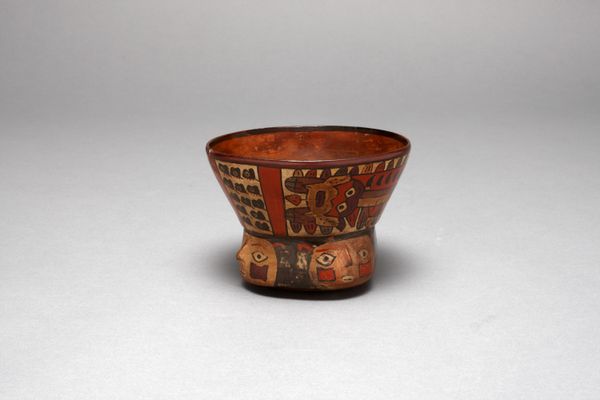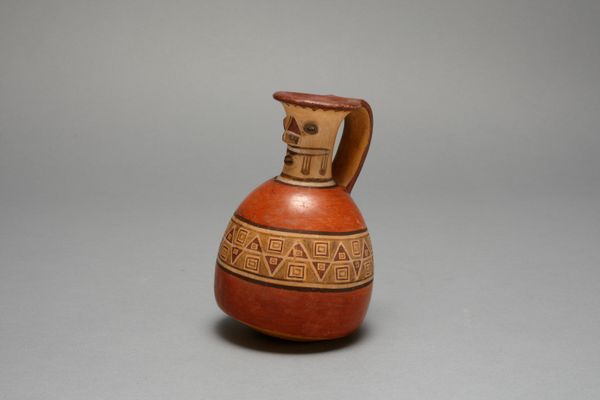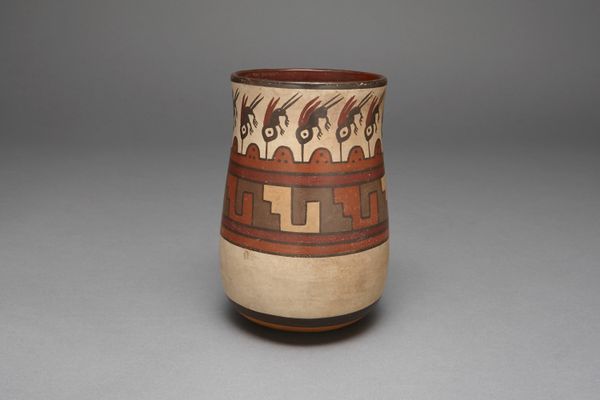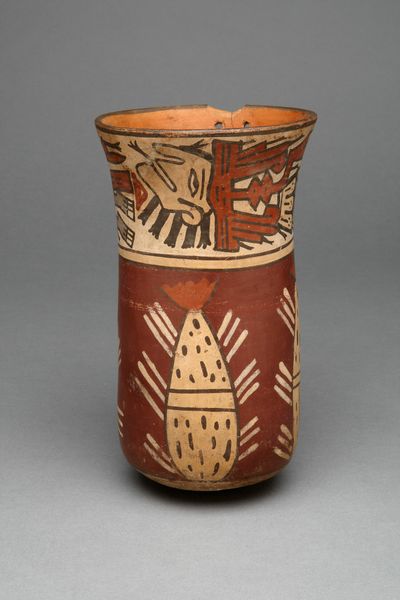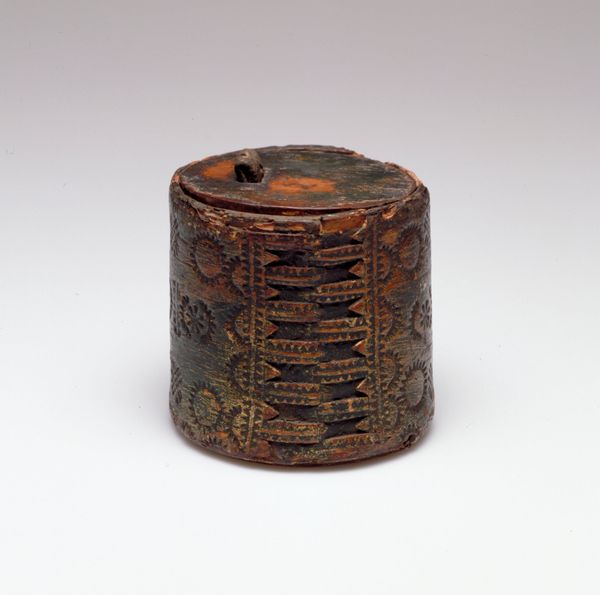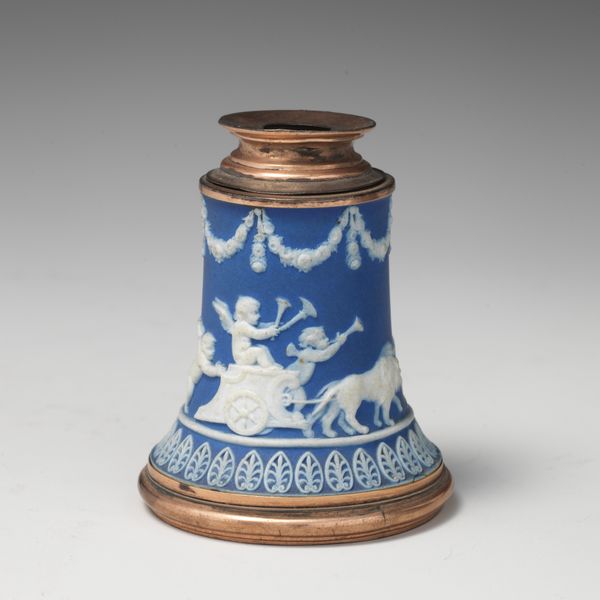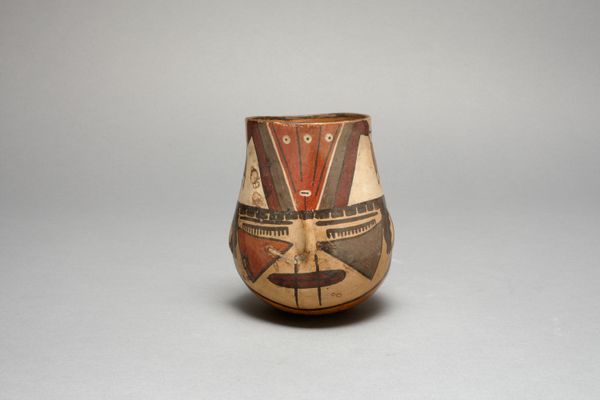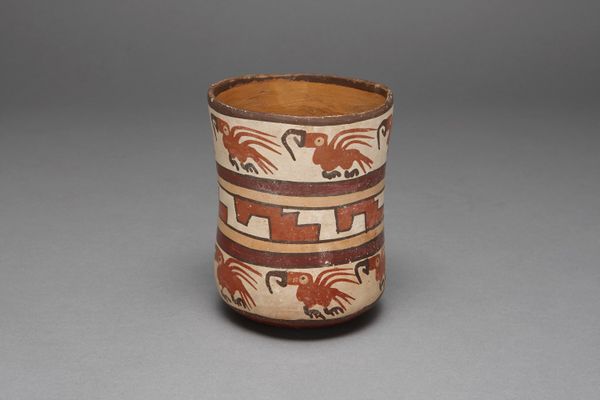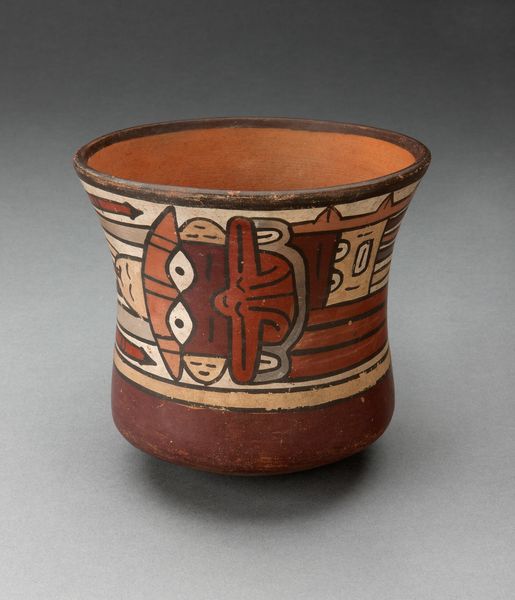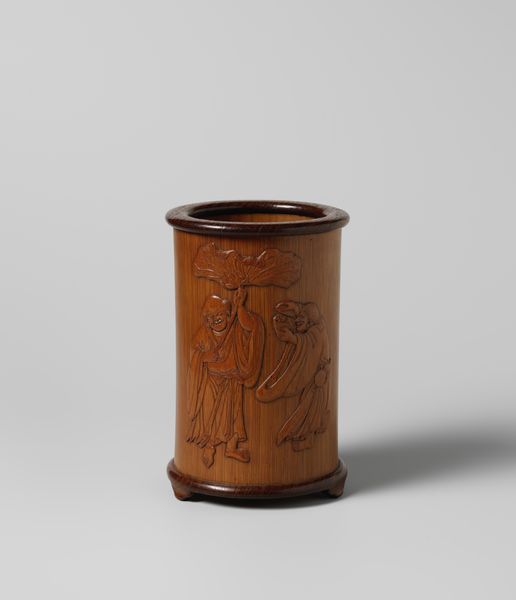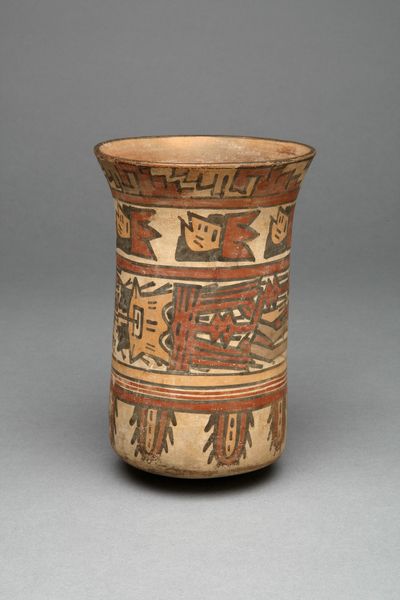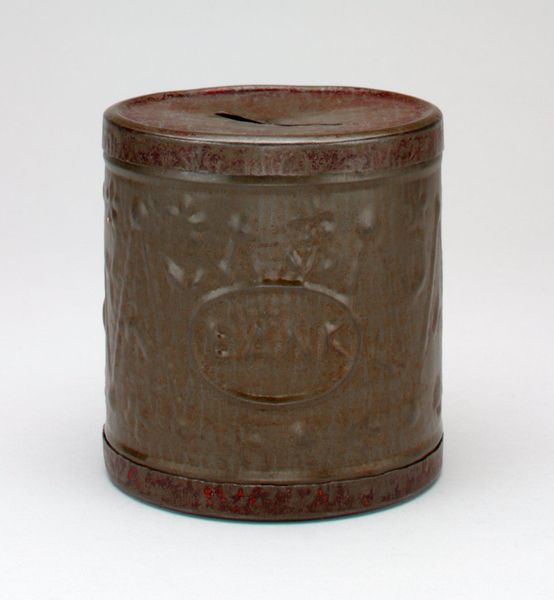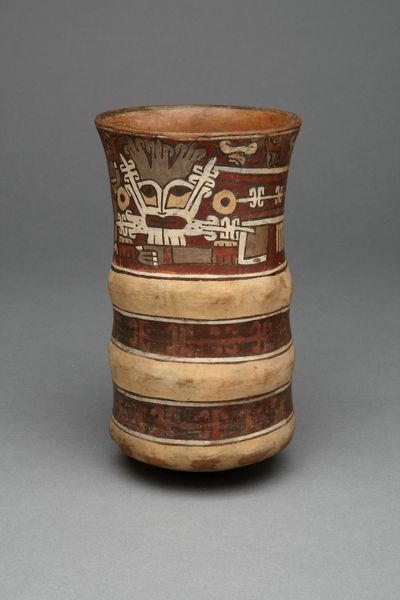
Beaker in the Form of a Human Head with Bound Lips; Bands of Abstract Motifs c. 180 - 500
0:00
0:00
ceramic
#
ceramic
#
figuration
#
geometric
#
indigenous-americas
Dimensions: 12.5 × 7.3 cm (4 15/16 × 2 7/8 in.)
Copyright: Public Domain
Curator: Here we have a ceramic beaker made by the Nazca people, likely between 180 and 500 AD. Notice how the vessel is shaped like a human head, and the mouth appears to be bound. Editor: There’s such an unsettling aura radiating from this little beaker. The stylized human head with those…bound lips…it hints at stories untold, doesn’t it? There’s a sense of contained power in the face and restraint, like it is deliberately silencing itself. Curator: Precisely. These details offer a window into Nazca society. The constraints placed upon the figure— the binding— were not randomly chosen to adorn just some household object. Rather they may imply complex ritual or sociopolitical undertones during a time fraught with resource wars and territorial struggles. Editor: I am caught by the geometric bands and abstract motifs circling above those wide, concerned eyes. They look as if they might roll up at any moment... I get that feeling they speak to something beyond the immediate…a reaching for cosmic order, or perhaps even chaos. Or, it's a kind of ancient user agreement? Who knew the Nazca had terms and conditions? Curator: It’s fascinating how they use readily available resources like clay, pigments made from minerals, and fire to achieve such compelling results. And how these techniques reflect established craft practices within a hierarchical society! The choice of materials signifies the artist’s direct engagement in production and their active contribution to social identity. Editor: It is also so small, a daily, ordinary use, or an intensely ceremonial piece. The divide collapses in something that asks to be picked up, carried around as something alive. You imagine hands long gone. Perhaps a silent scream of something beautiful and sad? Curator: The confluence of both function and symbolic messaging underscore their integral part in daily and ceremonial proceedings in this Indigenous American Civilization. It demonstrates both the functional aspects inherent to daily routines interwoven profoundly among social-religious frameworks established deeply among social frameworks present through material form within indigenous societies . Editor: It invites questions that resonate today - about voicelessness, representation, and even our own struggles with the constraints of society. And art gets the final laugh.
Comments
No comments
Be the first to comment and join the conversation on the ultimate creative platform.
